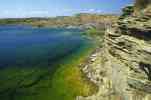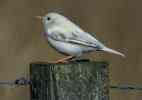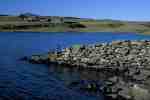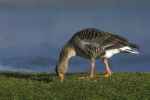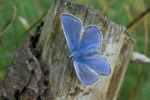 | Caithness.Org | Community | Business | Entertainment | Caithness... | Tourist Info | Site Map |
• Advertising • Chat Room • Contact Us • Kids Links • Links • Messageboard • News - Local & Scottish • News - UK & News Links • About / Contact Us • Submissions |
• Bookshop • Business Index & News • Jobs • Property For Sale • Property For Rent • Shop • Sutherland Business Index |
• Fishing • Fun Stuff • George, The Saga • Horses • Local Galas • Music • Pub Guide • Sport Index • What's On In Caithness |
• General Information • B & Bs • Backpackers • Caravan & Camping • Ferries • Getting Here • Holiday Letting • Hotels • Orkney • Pentland Firth • Sutherland • Taxis |
| N E W S F E E D S >>> |
NATURE AND ENVIRONMENT
HIGHLAND BIODIVERSITY - Caithness
Newsletter - 20 October 2005

20 October 2005
|
Biodiversity is one of the ‘buzz’ words that seems to pop up all the time these days. It simply means the "variety of life on earth”. This includes all living things, from the tiny garden ant to the giant redwood tree. You will find biodiversity everywhere, in window boxes and wild woods, in roadsides and rain forests, on seashores and snow fields. The concept is a relatively new perspective on the natural world and how we as humans relate to it, which has developed over the last couple of decades. In 1992 the UK was a signatory to the UN Convention on Biological Diversity at the Earth Summit in Rio. This committed the signing countries to conserving the earth's biodiversity, but to do so in the context of sustainable development and the needs of local communities. It argues the natural world is a precious asset, and we are encouraged both to maintain it for the long-term and to realise and equitably share its benefits. In Caithness, efforts have been made to work towards this goal. Education is an important tool as many people are unaware of the wonderful array Biodiversity surrounding them on a day to day bases. With such a range of different habitats and healthy environments, the existing biodiversity in Caithness is already rich and so we wish to sustain this and try to encourage and protect this precious asset for future generations to enjoy. The Caithness ‘Biodiversity’ project has been running since 2002 and has seen some good projects come to fruition. The Caithness Biodiversity Plan summarised priority species and habitats in the county and is the working document which future strategy for future biodiversity work in the county will be based.
In an attempt to keep the momentum going and getting projects up and running, the Caithness Biodiversity Group have formed. With funding of £10,000 from Leader+ and Scottish Natural Heritage, the group is currently taking a small number of projects forward. This group comprises of community representatives and local staff from relevant agencies; all with a common interest in Biodiversity and belief it is an important asset which should be supported and encouraged at local and national levels. At present an exciting mix of projects are underway in the county.
1. Northern Water Vole Survey
2. Habitat Enhancement Projects
b. Small blue butterfly habitat enhancement
c. John O Groats Mill Dam
d. Osprey Poles
e. Sand Martin Barrels The group plan to target other sources of funding to take forward further Biodiversity projects in the Caithness area. These projects will be a mix of awareness raising projects, practical projects to directly benefit biodiversity and also projects which will potentially have spin off effects for tourism in the area. Anyone with an interest in Biodiversity should check out the dedicated webpage on www.highlandbiodiversity.com/ If you have an interest in the local Biodiversity group, please contact Barbara Bremner at Barbara.bremner@snh.gov.uk
Marina Swanson, HC East Caithness Ranger
CAITHNESS AND SUTHERLAND BIODIVERSITY |



